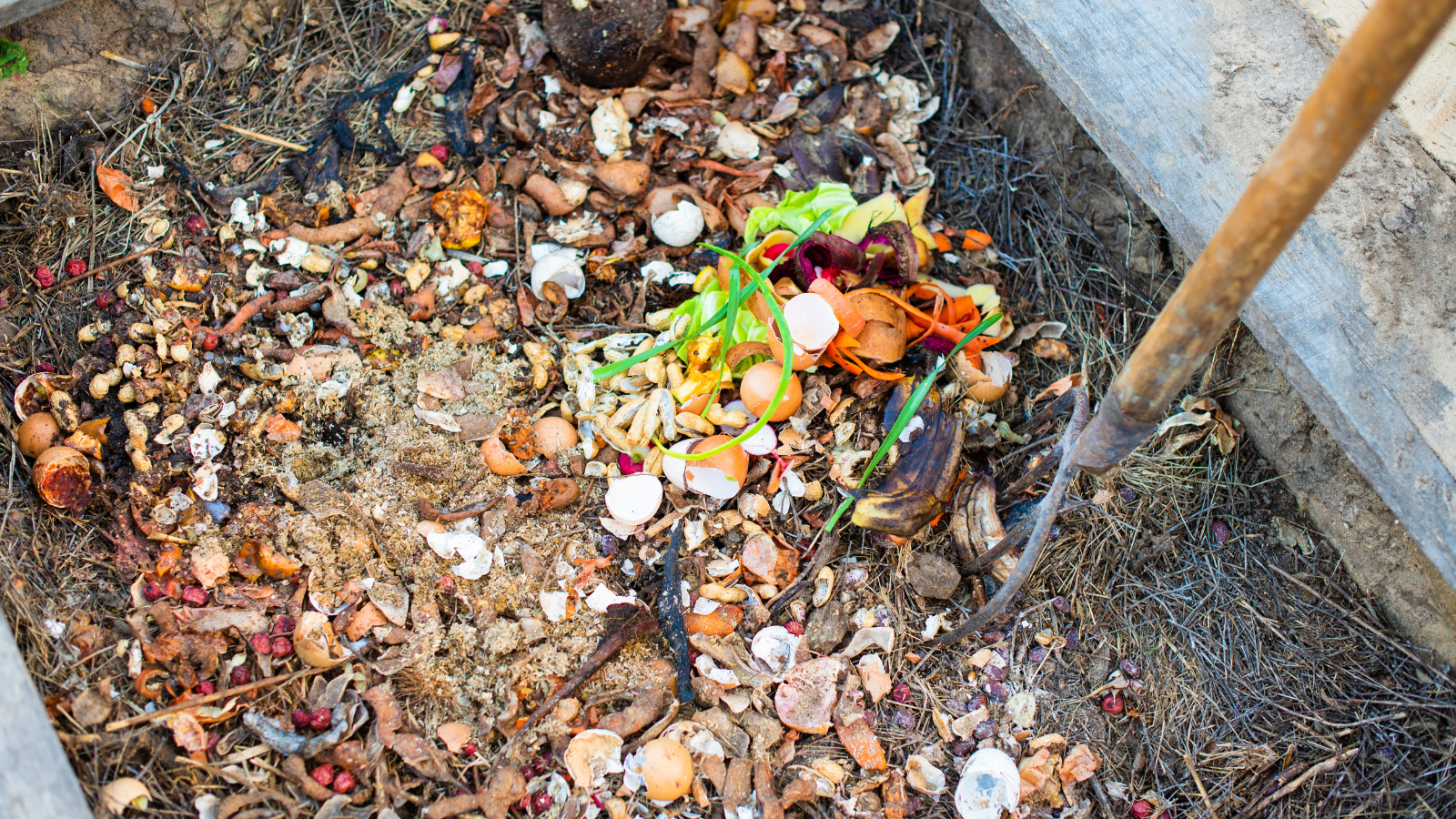The kitchen is often a significant source of waste, from single-use packaging to food scraps. Transitioning to a zero-waste kitchen doesn’t mean eliminating all waste overnight, but rather adopting practices that minimize waste, reduce plastic use, and make the most of the resources you already have. By being intentional about how you shop, store, and use food, you can create a more sustainable kitchen that benefits both the environment and your household.
In this article, we’ll explore practical tips for creating a zero-waste kitchen, covering everything from meal planning and food storage to composting and sustainable shopping habits.
1. Plan Your Meals and Make Shopping Lists
Planning meals is one of the most effective ways to reduce food waste and ensure you only buy what you need. By creating a weekly meal plan and shopping list, you can prevent food from going to waste and avoid impulse buys that may end up in the trash.

Tips for Meal Planning:
- Plan Around What You Have: Check your fridge and pantry before making a shopping list to avoid buying duplicates.
- Shop with a List: A list helps you stay focused, saving money and reducing food waste.
- Use Ingredients in Multiple Meals: Select recipes with overlapping ingredients to use up perishable items more efficiently.
Benefits:
- Reduces food waste by ensuring you only buy what you need.
- Helps prevent unused food from spoiling in the fridge.
- Saves money and time on grocery shopping.
2. Choose Reusable Storage Containers
Switching to reusable containers is an easy way to reduce single-use plastic waste in the kitchen. Glass jars, stainless steel containers, and silicone bags are excellent alternatives to plastic bags and disposable wraps, helping keep your food fresh without creating waste.

How to Make the Switch to Reusable Containers:
- Use Glass Jars for Storage: Glass jars are perfect for storing dry goods like pasta, rice, and grains and can be repurposed from jars you already have.
- Invest in Silicone Storage Bags: These are reusable, versatile, and can replace plastic bags for storing food in the fridge or freezer.
- Try Beeswax Wraps: Beeswax wraps can replace plastic wrap for covering bowls and wrapping snacks.
Benefits:
- Reduces the need for single-use plastic in food storage.
- Keeps food fresh and organized.
- Encourages a waste-free approach to food storage.
3. Buy in Bulk and Bring Your Own Bags
Buying in bulk is a sustainable way to reduce packaging waste, especially when you bring your own containers or bags. Many stores allow you to buy grains, nuts, pasta, and even liquids like oil and vinegar in bulk, cutting down on excess packaging and plastic.

Tips for Buying in Bulk:
- Bring Reusable Bags and Jars: Use cloth bags for dry goods and glass jars for liquids to avoid plastic packaging.
- Shop at Bulk Stores: If available, visit stores that specialize in bulk goods or that have refill stations.
- Buy What You Need: Bulk shopping lets you control portions, preventing overbuying and food waste.
Benefits:
- Reduces plastic and packaging waste.
- Saves money, as bulk goods are often cheaper.
- Allows for flexible portion sizes to fit your needs.
4. Compost Food Scraps
Composting food scraps is an essential part of a zero-waste kitchen. Instead of throwing away fruit peels, vegetable ends, and coffee grounds, you can compost them to create natural fertilizer for your plants or garden.

How to Start Composting at Home:
- Set Up a Compost Bin: Use a compost bin for indoor or outdoor composting, or create a compost pile in your yard if you have the space.
- Collect Compostable Scraps: Include vegetable scraps, fruit peels, coffee grounds, eggshells, and other compostable items.
- Balance “Greens” and “Browns”: Add a mix of green materials (food scraps) and brown materials (dry leaves, cardboard) for optimal decomposition.
Benefits:
- Reduces waste sent to landfills and lowers methane emissions.
- Creates nutrient-rich compost for your garden or plants.
- Supports a sustainable, waste-free kitchen.
5. Cook with “Root-to-Stem” and “Nose-to-Tail” Practices
Root-to-stem cooking involves using every part of fruits and vegetables, while nose-to-tail cooking uses all parts of an animal, helping reduce food waste. By getting creative with recipes, you can find ways to use up everything from vegetable stems to meat bones, ensuring nothing goes to waste.

Ideas for Root-to-Stem and Nose-to-Tail Cooking:
- Use Vegetable Tops: Carrot tops, beet greens, and radish greens can be used in salads, pesto, or sautéed as a side.
- Make Homemade Broth: Save vegetable scraps and meat bones to make homemade broths for soups and stews.
- Get Creative with Leftovers: Repurpose leftovers into new meals, like using roasted vegetables in a salad or making soup from last night’s dinner.
Benefits:
- Maximizes the value of the food you buy.
- Reduces food waste and stretches your grocery budget.
- Encourages creativity in the kitchen with new recipes.
6. Use Cloth Towels Instead of Paper Towels
Switching from paper towels to cloth towels is an easy way to reduce kitchen waste. Cloth towels can be washed and reused, making them a more sustainable option for cleaning up spills and wiping surfaces.

How to Make the Switch to Cloth Towels:
- Choose Durable Cloths: Invest in absorbent, washable cloths that can handle kitchen messes.
- Have a Designated Bin for Used Towels: Keep a small bin in the kitchen for used cloth towels, and wash them regularly.
- Reuse Old T-Shirts or Towels: Cut up old T-shirts or towels to make your own cleaning rags.
Benefits:
- Reduces the need for disposable paper products.
- Saves money on paper towel purchases.
- Encourages a more sustainable, reusable approach to cleaning.
7. Grow Your Own Herbs and Small Vegetables
Growing herbs and small vegetables at home can help reduce food waste by providing fresh ingredients on hand, so you only harvest what you need. It also reduces the packaging and carbon footprint associated with store-bought produce.

Tips for Starting a Kitchen Garden:
- Grow Herbs in Pots: Basil, mint, parsley, and chives are easy to grow indoors or on a windowsill.
- Plant Lettuce and Greens: Leafy greens like lettuce and spinach grow quickly and can be harvested multiple times.
- Use Regrown Vegetables: Some vegetables, like green onions and celery, can be regrown in water from kitchen scraps.
Benefits:
- Provides fresh, home-grown ingredients without packaging.
- Reduces food waste by allowing you to harvest only what you need.
- Encourages a closer connection to the food you consume.
8. Preserve Food to Extend Its Shelf Life
Learning to preserve food through freezing, drying, or canning can help prevent food waste by extending the shelf life of perishable items. This way, you can buy in bulk or take advantage of seasonal produce without worrying about spoilage.

Ways to Preserve Food:
- Freeze Excess Produce: Chop and freeze fruits, vegetables, and herbs to use in future recipes.
- Dry or Dehydrate: Dry fruits, herbs, and vegetables for long-term storage, either with a dehydrator or in the oven.
- Try Canning: Canning is a great way to preserve foods like tomatoes, jams, and pickles, making them last for months.
Benefits:
- Reduces food waste by prolonging the shelf life of fresh ingredients.
- Saves money by preserving seasonal produce when it’s abundant.
- Allows for a zero-waste approach to cooking by making the most of all ingredients.
9. Avoid Packaged and Processed Foods
Packaged and processed foods often come with excessive plastic and cardboard packaging. Choosing fresh, whole foods from the produce section or bulk bins helps reduce waste and supports a healthier diet.

Tips for Reducing Packaged Foods:
- Shop at Farmers’ Markets: Buy directly from local farmers to avoid packaging and support sustainable agriculture.
- Choose Whole Foods: Opt for whole fruits, vegetables, grains, and legumes, which are often available without packaging.
- Avoid Pre-Cut or Pre-Packaged Produce: Pre-cut and pre-packaged produce is convenient but comes with extra plastic. Buying whole items and prepping them at home is more sustainable.
Benefits:
- Reduces plastic and packaging waste.
- Promotes healthier eating habits with fresh, whole foods.
- Supports sustainable and eco-friendly shopping habits.
10. Buy Local and Seasonal Produce
Buying local and seasonal produce supports nearby farmers, reduces the carbon footprint associated with food transportation, and often means less packaging. Local foods are typically fresher and more nutrient-dense, as they don’t have to travel long distances to reach you.

How to Buy Local and Seasonal Produce:
- Visit Farmers’ Markets: Farmers’ markets are excellent places to find fresh, local, and often organic produce.
- Choose Seasonal Ingredients: Focus on foods that are in season, as they’re typically more affordable and fresher.
- Join a CSA (Community Supported Agriculture): Many farms offer CSAs where you can receive a weekly or monthly box of seasonal produce.
Benefits:
- Reduces the environmental impact of food transportation.
- Supports local farmers and your community’s economy.
- Encourages healthier eating with fresh, seasonal ingredients.
Conclusion: Take Steps Toward a Zero-Waste Kitchen
Creating a zero-waste kitchen is all about making small, intentional choices that reduce waste and promote sustainability. By embracing reusable options, reducing food waste, buying in bulk, and choosing fresh, local produce, you can make a meaningful impact on the environment right from your kitchen.
Start with one or two of these steps, and as they become habits, explore additional ways to reduce waste. A zero-waste kitchen is not only good for the planet, but it also promotes a healthier, more intentional way of living that benefits you and your community.
